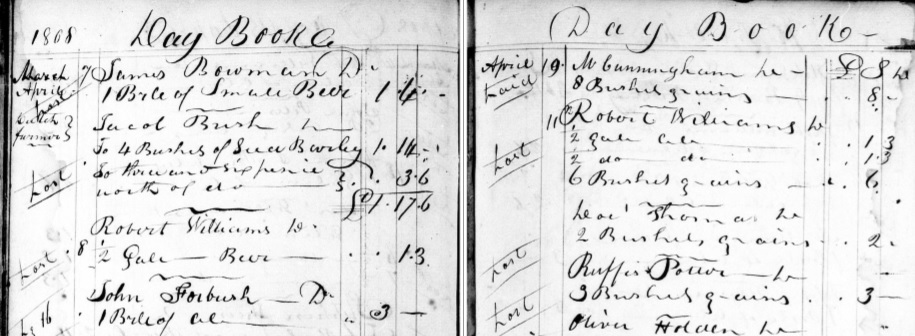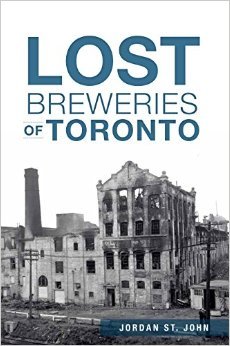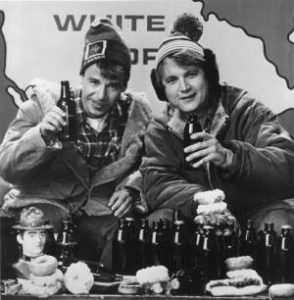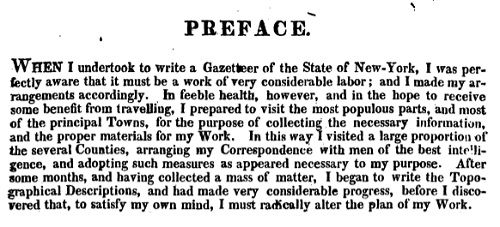 I have started a winter project. I am transferring the data in the 1808 Day Book kept by James Vassar‘s brewery at Poughkeepsie NY into a spreadsheet to allow me to grind the data to see if I can learn anything. Careful readers will remember that two and a half years ago (Good Lord!) I posted about the brewing log from his son Matthew Vassar‘s days heading his own brewery in the mid-1830s. That book described ale batch after ale batch, details the particulars of each session. It traces seventeen or so stages from heating the water to selling the barrels. The log that starts in March 1808 log is different. Being earlier and prior to the advent of things like agricultural societies, it is slightly pre-scientific. It is a business general ledger showing purchases and sales, identifying customers and suppliers as well as the prices of supplies bought and ale barrels sold. I hadn’t expected to see things worth reporting on after just copying the first month’s worth of entries but here’s what I see so far:
I have started a winter project. I am transferring the data in the 1808 Day Book kept by James Vassar‘s brewery at Poughkeepsie NY into a spreadsheet to allow me to grind the data to see if I can learn anything. Careful readers will remember that two and a half years ago (Good Lord!) I posted about the brewing log from his son Matthew Vassar‘s days heading his own brewery in the mid-1830s. That book described ale batch after ale batch, details the particulars of each session. It traces seventeen or so stages from heating the water to selling the barrels. The log that starts in March 1808 log is different. Being earlier and prior to the advent of things like agricultural societies, it is slightly pre-scientific. It is a business general ledger showing purchases and sales, identifying customers and suppliers as well as the prices of supplies bought and ale barrels sold. I hadn’t expected to see things worth reporting on after just copying the first month’s worth of entries but here’s what I see so far:
• The record may confirm that he was still brewing with the local wheat as the Dutch in the Hudson Valley had been since for almost 200 years. For the first four weeks he notes purchases of “grain” by the bushel from a number of sources. Then in the second week of April he buys “seed barley.” Why note the sort of grain only that one time otherwise? In January 1809, there is an entry for the purchase of rye. What indeed is “grain”?
• He seems to know most of the people he is dealing with. Only two receive special notation. One supplier of grain is noted as “Dutch Farmer” while another, William Jackways, is stated to be from “Rhine Beek.” Most of the others are both repeatedly referenced in the book as well as listed without citation, some without even a first name like Mr. Cunningham and Dr. Thomas. Rhinebeck NY is across the Hudson and maybe tent to twelve miles north of Poughkeepsie. Why did the man from Rhinebeck come that far? Who knows but he bought 13 barrels of ale for 39 pounds. By more than ten times, the biggest sale of the first few weeks.
• As I noted on Facebook, cross referencing the brewery logs to other web based documents like cemetery records helps identify the some of the guys who are buying beer from Vassar in 1808. It seems that a rather good class of chap likes Vassar’s ale. One Thomas Oakley, likely this one, buys a half gallon of ale on 19 March for just one shilling, 3 pence. That’s a growler in today’s measures. He’s the eighth account entry on that day busy with grain deliveries. It’s also the year before he marries, he is a twenty-five year old lawyer early in his career and long before he is in Congress. It was a Saturday. Good for you, Tom.
• On that same March 19th, Vassar buys 14 pounds of hops from Thomas Harden. The price is 1/6.1.1 which I am not quite clear about. Maybe one pound six shillings and change? We can leave it at that. No, in June he buys 93 pounds of hops from someone else and the rate is given there as 1/7 or one shilling and six pence per… whatever… and then the price paid of seven shillings and seven pence. it seems to be that hop prices are bargained for while grains are bought for a straight shilling per bushel. Hops by weight but grain by volume. Note that.
• One man who both buys and sells beer is only listed as Mr. Cunningham. Likely he is Garwood Cunningham, landlord of the Poughkeepsie Hotel. It was the successor of the Van Kleeck House – note that name – which was the first tavern in Poughkeepsie, and was kept as such for nearly a century. It was built in 1797. Garwood himself was quite a lad:
CUNNINGHAM, GARWOOD H., son of Garwood and Mary, became a man of considerable importance in Woodbury, as a military officer, and Major of the 13th Regiment of Infantry. Representative to the General Assembly from Woodbury, three sessions; twice in 1799, and once in 1801 ; also a selectman, &c, and sheriff’s deputy many years in Litchfield County. He m. Sarah Hawkins, of Derby, Conn., a sister of Joseph Hawkins. He removed early in the 18th century, to Poughkeepsie, New York, where he remained several years as keeper of the principal hotel there. In the war of 1812, he was connected with the American army, near Canada, where he was taken sick and died;
Looks like he was an officer in both wars. He also may have had a son called Garwood. He sells Vassar grain in seven separate ten bushel batches in that first month and buys six full barrels of ale throughout that first month. Not only does he have the hotel but he keeps a farm.
That is it for now. Expect more as the winter weather ebbs and flows. Or flows and ebbs. I have a sense that both the economics of running a brewing business in 1808 are right there to be spun out and perhaps also a significant part of the life of a small community in the early days of the new nation. One fellow recorded, Rufus Potter, ran for election as a village trustee in 1811. Another, Oliver Holden, was President of the Board of Village Trustees in 1825 when one Matthew Vassar, son of James, also sat on that body. Fabulous.



 It’s that time again. The monthly edition of
It’s that time again. The monthly edition of 

